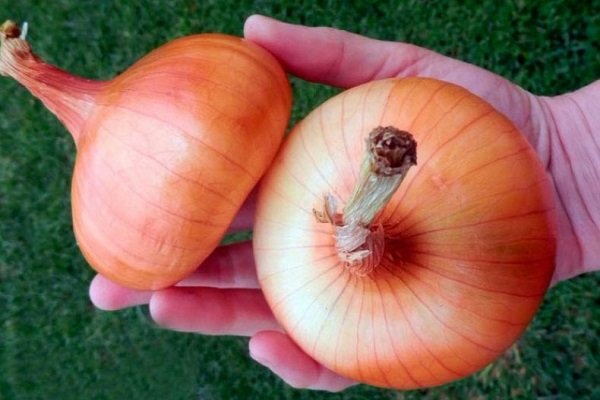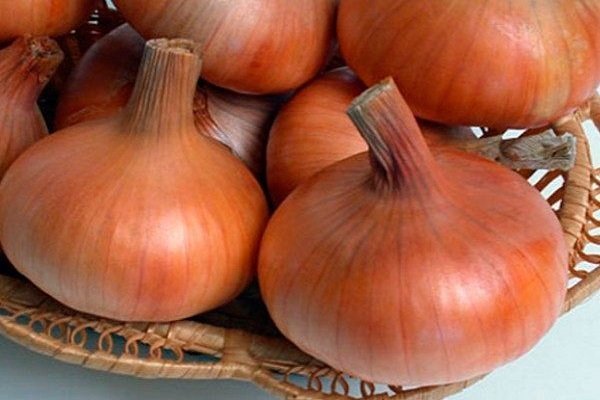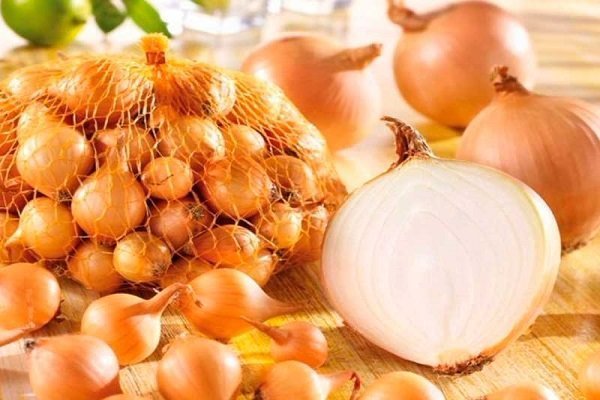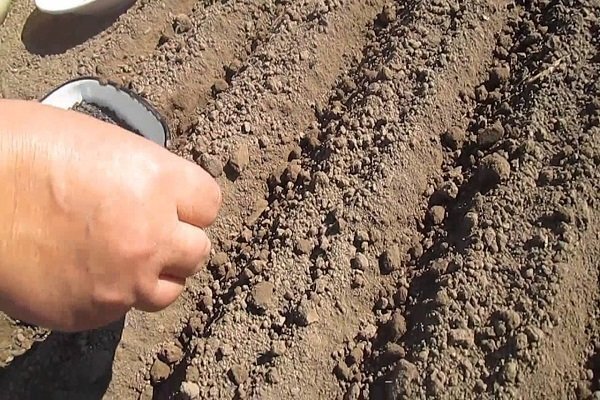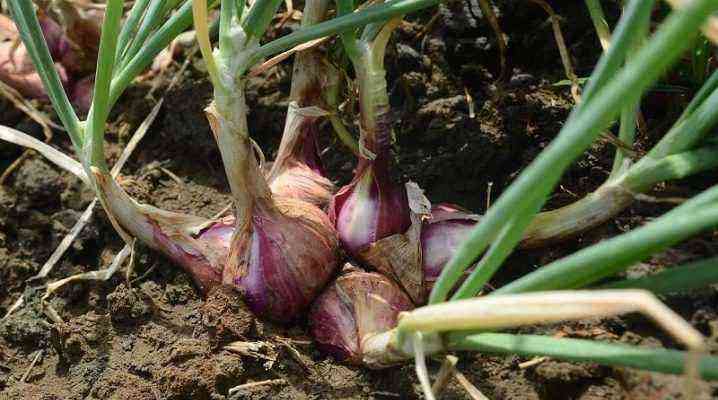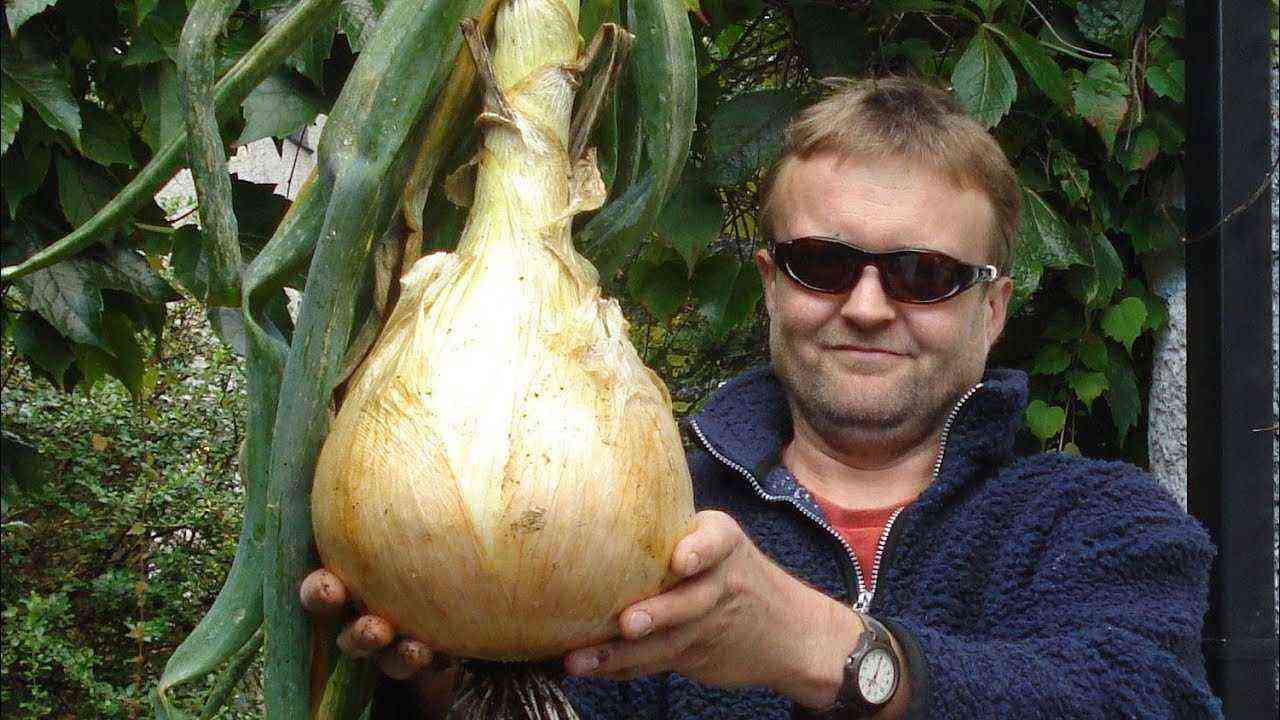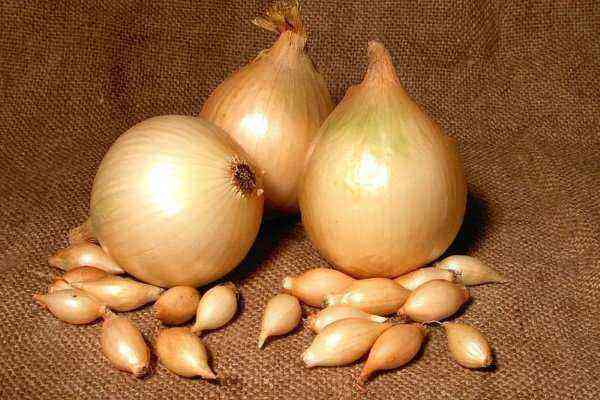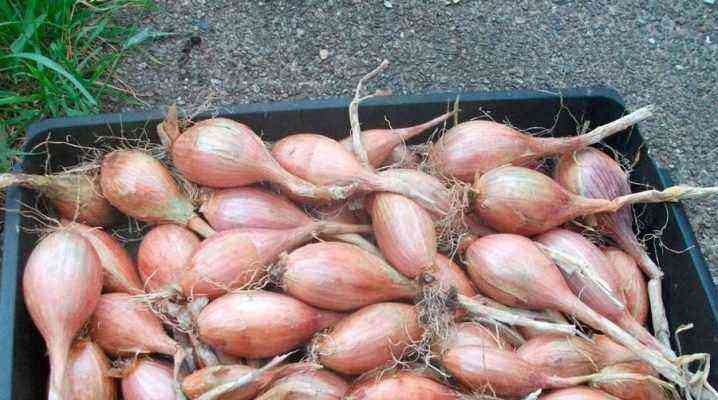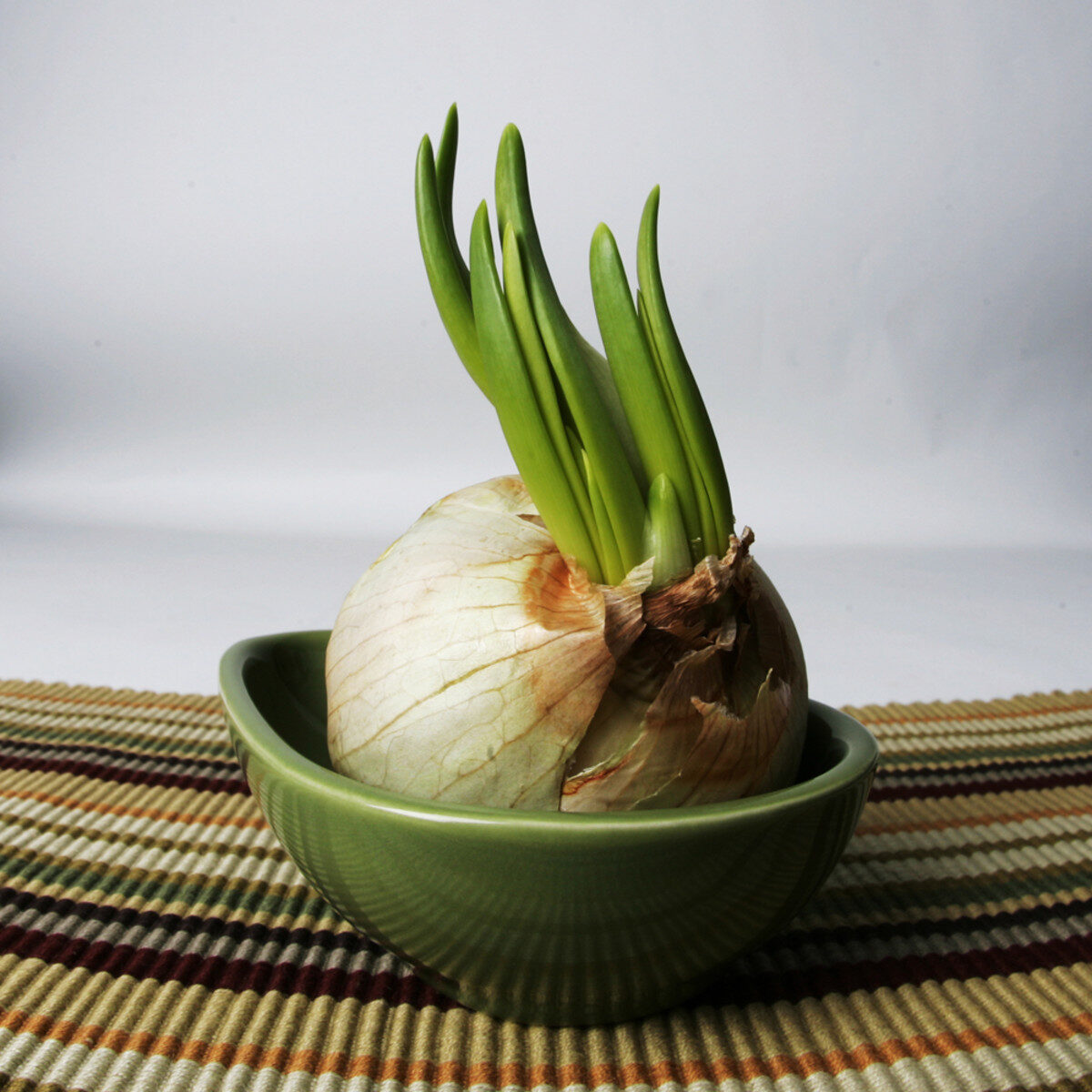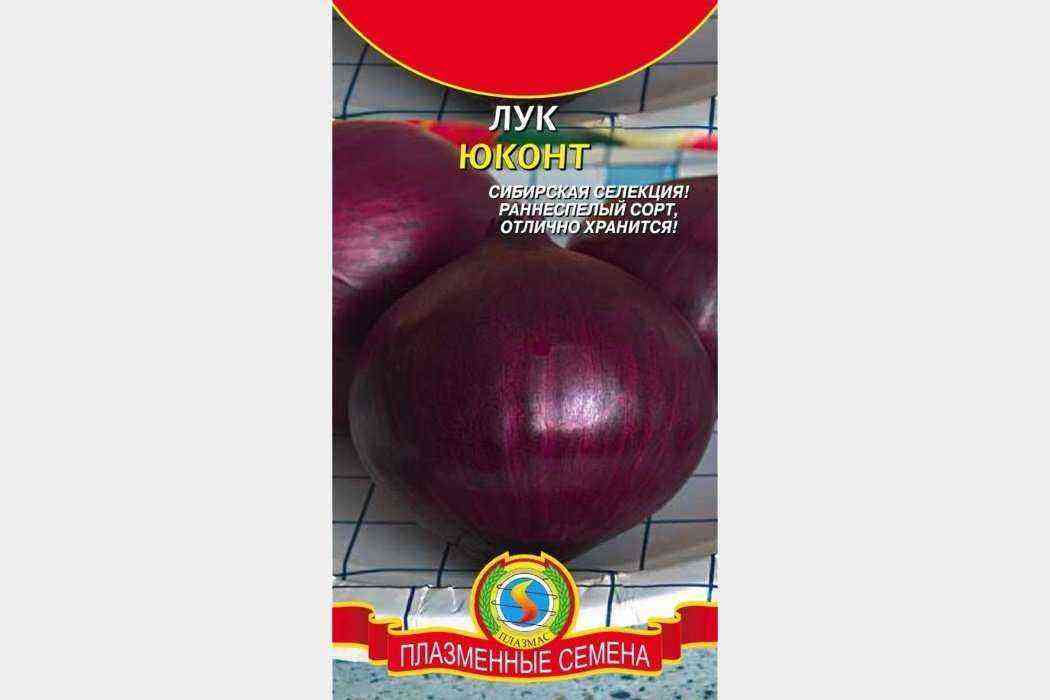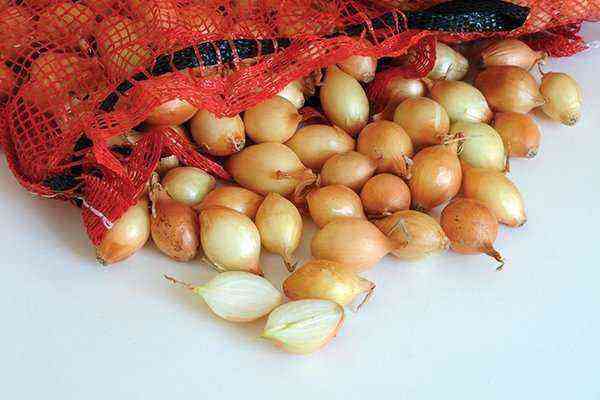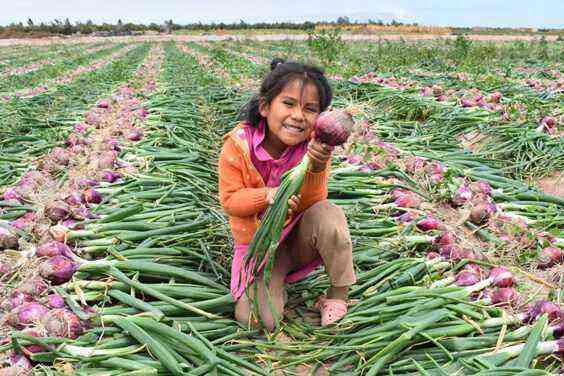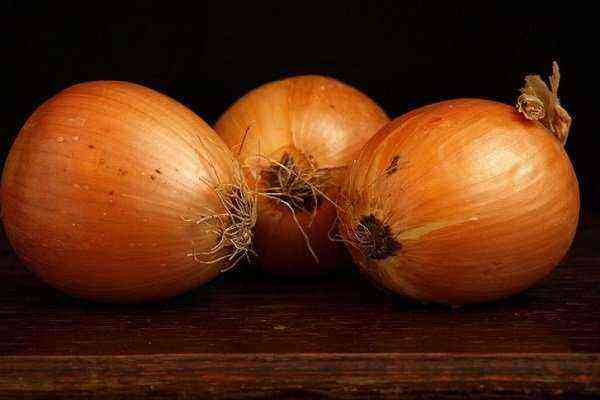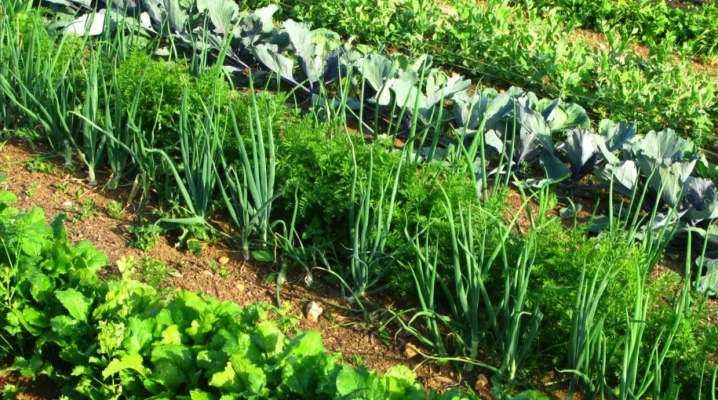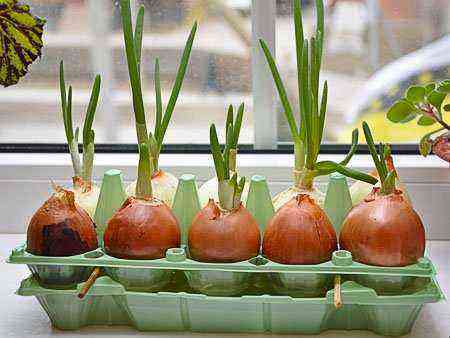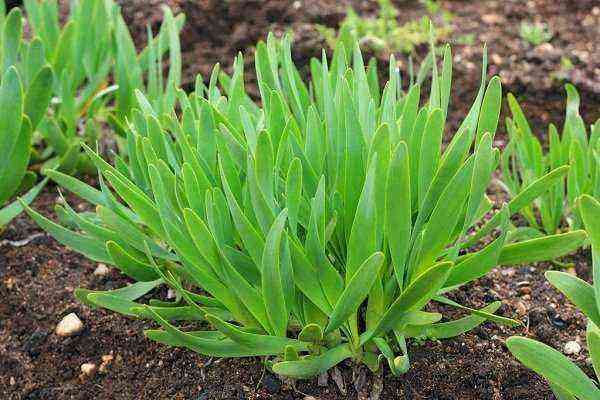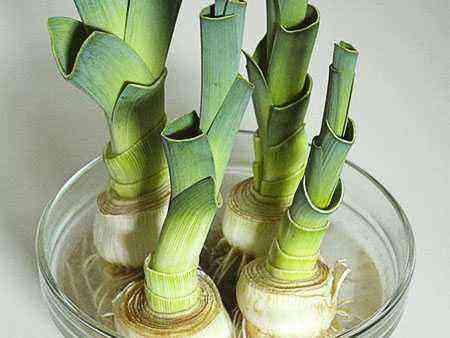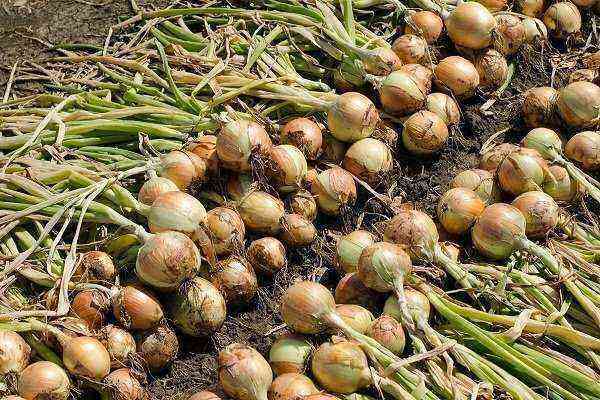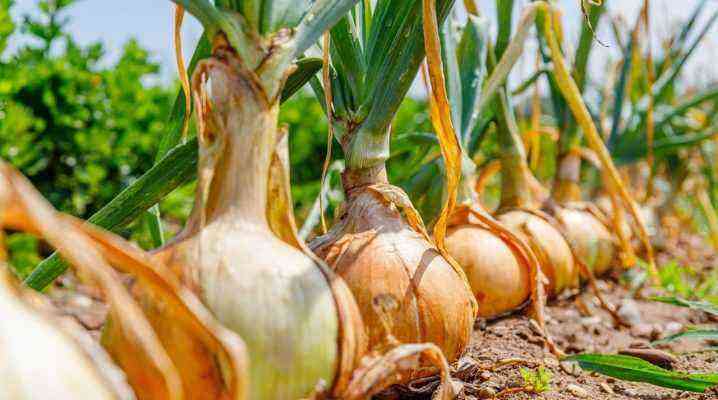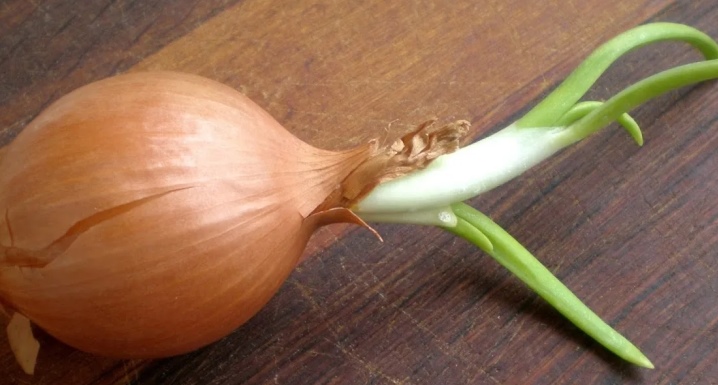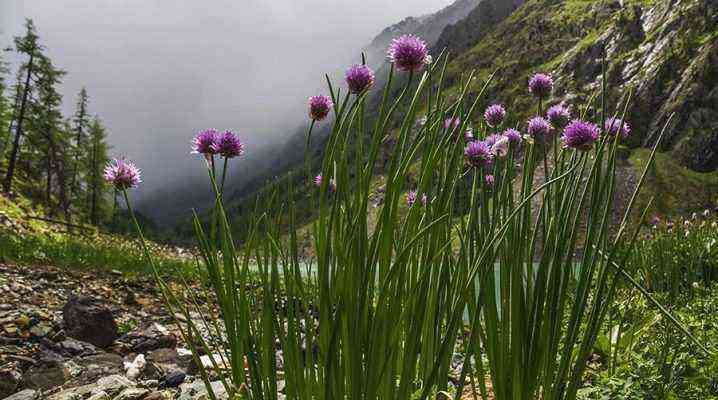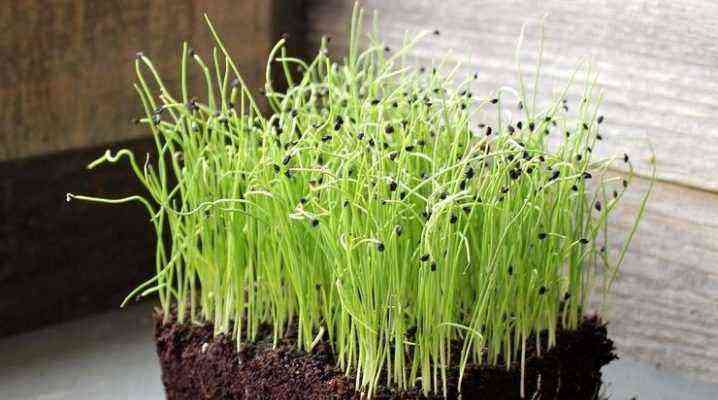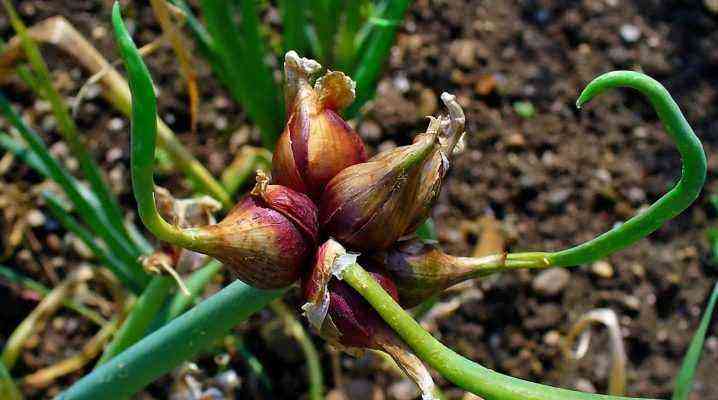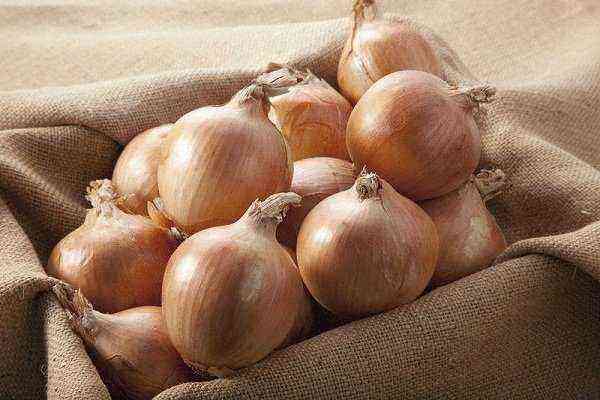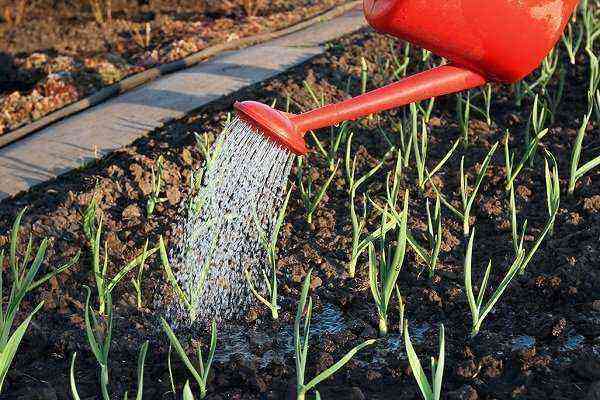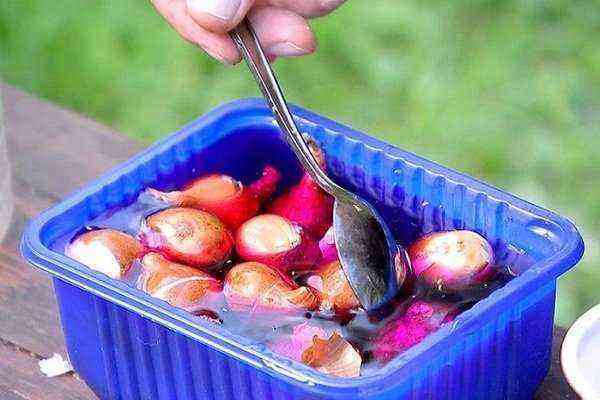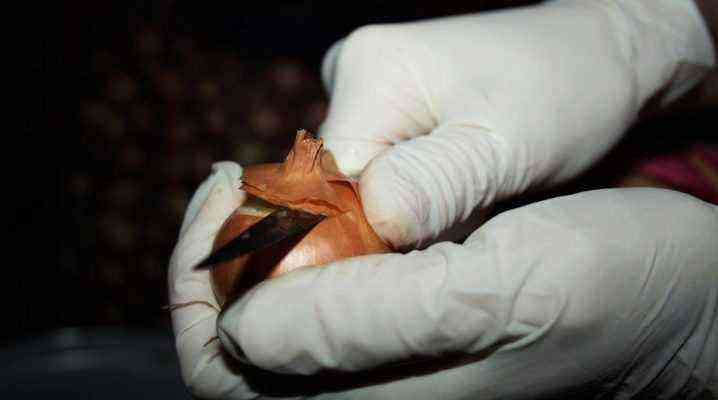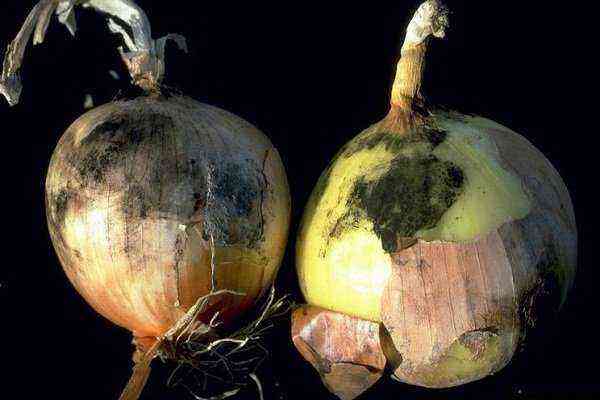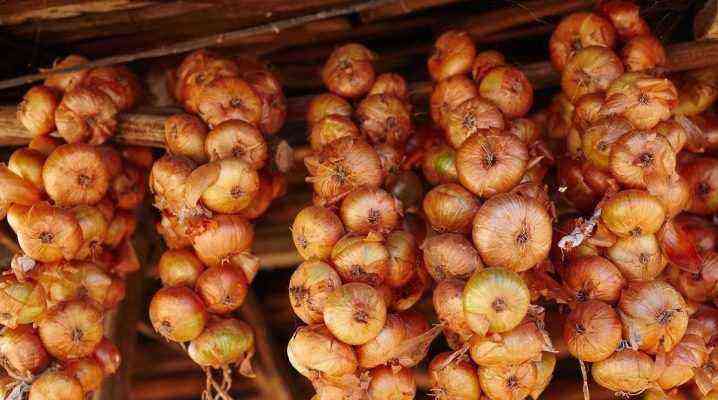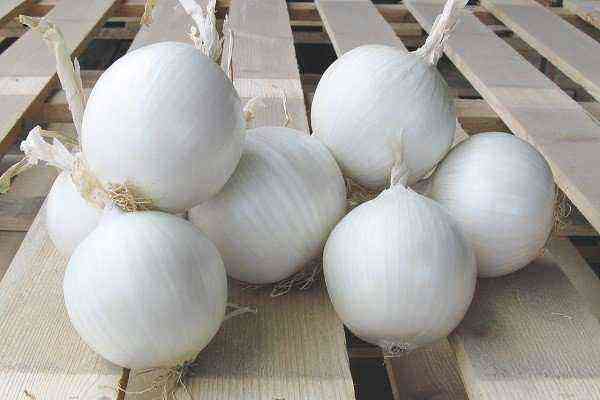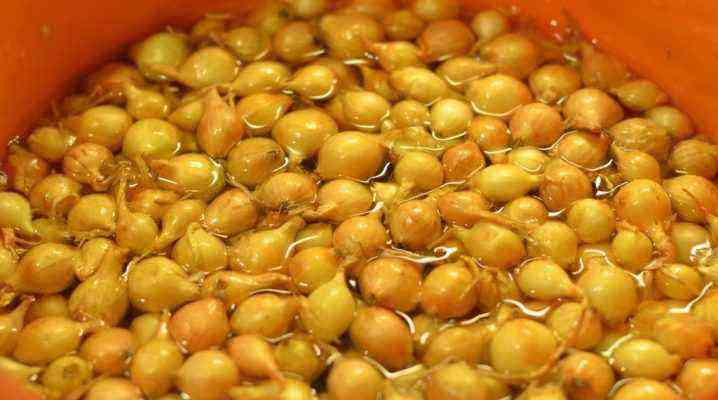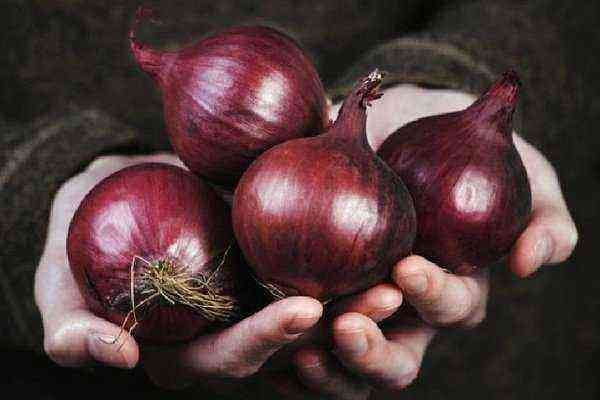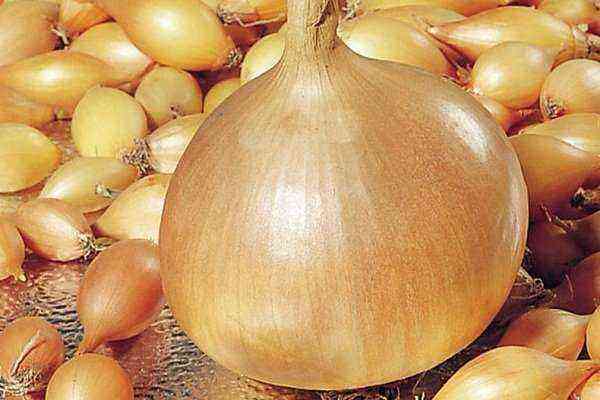Onions of the Stuttgarter Riesen variety have juicy flesh, a sharp taste and are a good example of German selection. This onion is usually cultivated as an onion, and in the summer season they are planted for forcing greens. Growing culture has its own characteristics.
Variety description
Stuttgarter Riesen is characterized by medium maturation. Mature heads have a rounded, slightly flattened shape, covered with a dense husk with a slight sheen. The color of ripe bulbs varies from beige to yellow-orange, sometimes with a brown tint. The average weight of one head is from 90 to 160 g. In rich soils with abundant watering, the weight of the bulbs reaches 250 g.
The tight fit of the scales inside the head ensures high keeping quality, thanks to which it is well stored, does not lose freshness for a long time. The pen is long, dense and juicy, has a beautiful rich dark green color and excellent taste.
Stuttgarter Riesen is relatively easy to care for, adapts well to the weather conditions of different regions of Russia. Growing it during the cold season in greenhouses for greens is also very popular and profitable. Depending on the climate, the ripening time of the vegetable will vary slightly.
Thanks to excellent varietal qualities and simple agricultural technology, the variety has gained well-deserved popularity. It is widely distributed not only in Russia, but throughout the world. Bow Stuttgarter Riesen is different:
- yield up to 8,5 kg per 1 sq. m;
- attractive trade dress;
- wonderful taste;
- high content of vitamins C, B1, B2, B6, PP, E;
- long shelf life;
- sufficient frost resistance;
- resistance to common diseases.
The onion variety Stuttgarter Riesen is well suited for cooking various dishes, preserving, drying and freezing. When fresh, it has a classic spicy taste and spicy smell, which are indispensable in Russian cuisine.
Peculiarities of growing
It is not recommended to cultivate Stuttgarter Riesen onions in one place for several years, it is better to change the site every season.
For the cultivation of vegetables, it is better to choose well-fertilized, fertile lands. A distinctive feature of the variety is that it is able to produce a good harvest on poor, depleted soils. Although in this case the bulbs will be smaller in size, their taste will be fully preserved.
It is recommended to plant onions in the garden in those places that were previously occupied by the following crops:
- tomatoes;
- cucumbers;
- legumes;
- cabbage;
- radish;
- zucchini.
But after potatoes, it is not worth cultivating onions in the same areas, because. it will grow weakly, lack nutrients.
For planting this crop, you can choose both autumn and spring.
There are 3 classic ways to plant onions:
- From seed. This method is divided into autumn and spring sowing.
- Seedlings. Seeds are germinated indoors and later transferred to the beds.
- Sevkom. Small onion heads are planted in open ground in spring, late summer or early autumn. Winter onions usually differ from summer onions in larger head sizes and increased keeping quality, are more resistant to diseases and damage by parasitic insects.
Cultivation from seeds
Winter onions grown from seeds have a short ripening period – 65-70 days from the moment the first shoots appear. You can harvest such a crop much earlier than when planting in the spring.
Seeds are sown in early autumn or late summer, starting from August 20, so that the plants have time to grow and leave for the winter with a well-formed root system. This will help them to calmly endure frosts and will enable them to quickly grow with the onset of warm days. Onions planted in autumn are less likely to form arrows.
Spring sowing can begin in April, when the threat of frost has passed.
To make it easier to distinguish small seeds against the background of the soil when sowing, they can be mixed with loose chalk. This will make it easier to evenly distribute the plants in the beds.
The procedure for preparing both winter and spring sowing is the same:
- Soak the seeds for a day in water at room temperature. This greatly speeds up their germination.
- After soaking, dry the seeds in the open air, spreading them on a paper towel or clean towel.
- In the ground, make thin furrows 2-3 cm deep at a distance of 15 cm between rows. Then you need to moderately moisten the soil.
- Sow the onion in the furrows. Try to evenly distribute the planting material in the recess by 1 plant per 2 cm. Lightly sprinkle dry soil on top.
- Immediately after sowing, do not irrigate so that a crust does not form on the surface.
- After germination, plants should be thinned out so that they have enough room to develop. The distance between the bulbs should be 7-10 cm.
Growing from seedlings
In early spring, you can sow Stuttgarter Riesen for seedlings. Seedlings are kept in a bright room at room temperature. When the soil in the garden warms up to a temperature of 15 degrees, you can plant seedlings in open ground. This method will allow you to get an earlier harvest compared to spring sowing.
Growing from onion sets
When planting sevkom, the ripening period of onion heads will be 100-112 days from the moment the first shoots appear.
For the best result, you should choose medium and small onion sets that are evenly colored and without physical damage. Before planting bulbs:
- They sort, dry, carefully examine for infection with pests and diseases. The yield depends on the quality of the planting material.
- Soak for a day in warm water to activate germination.
- Before planting, they are disinfected with a composition prepared from table salt and potassium permanganate. In 5 liters of water you need to dissolve 2 tbsp. l. salt and tint the solution with potassium permanganate to a light pink color.
The sowing is planted in the garden at a distance of 10-15 cm from each other, gently deepening by about 3-5 cm, depending on the size of the bulbs. The aisles are made about 20 cm in size.
Growing onions on a feather
Onion Stuttgarter Riesen is well cultivated not only as a bulb, but also on a feather. Dense juicy greens of a saturated shade have a spicy spicy taste and a pronounced aroma.
You can plant both sets and ripe bulbs on the feather. In this case:
- when planting on each bulb, cross-shaped incisions are made at the point of growth;
- bulbs are planted on the beds very tightly, almost without gaps;
- they also practice solid planting, making wide rows with paths between them for ease of movement across the field.
Care culture
Despite the low demands on onions for care, to achieve a good result, you need to take care of the plants.
Onion beds need to be regularly weeded and loosened so that the plants have enough light and air for development.
Plants need to be watered regularly. Prolonged drying of the soil should not be allowed – this can adversely affect the taste of onion heads and feathers. With a lack of moisture, the plants look unhealthy, the flesh and greens become stiff and excessively bitter.
Often, signs of a depressed state of a plant appear with a lack of certain microelements:
- lack of nitrogen: the feather turns pale, becomes unhealthy, becomes flabby;
- lack of potassium: the plant gradually fades, becomes soft;
- lack of phosphorus: the onion darkens and dries, starting from the tip of the leaf, and gradually dries completely.
To feed a ripening vegetable, a traditional complex of fertilizers, both organic and chemical, is used:
- Before planting, it is advisable to add rotted cow dung, bird droppings to the soil. At the same time, it is necessary to ensure that the organic matter is not fresh and does not have signs of infection by parasitic insects.
- After 14-6 days from the moment the first shoots appear, nitrogen fertilizer is applied to the soil for better development of green mass.
- After 30 days, the time comes for the second feeding. Plants are fertilized with a nitrogen-phosphorus preparation with the addition of potassium.
- At the stage of the beginning of the formation of heads, a potassium-phosphorus mixture can be introduced into the ground in the beds.
- After harvesting, it is desirable to sow the area with green manure to restore the fertile layer.
Diseases and pests
The most common problems in the cultivation and storage of Stuttgarter Riesen onions are due to onion fly, neck rot and downy mildew.
The onion fly lays its eggs in the heads, from which their flesh is damaged and rots. You can fight this pest with:
- treatment with disinfectant solutions;
- sprinkling the soil with ash and tobacco dust;
- alternating beds of onions with carrots, the smell of which repels the pest;
- autumn digging of the soil, as a result of which harmful insects and their larvae freeze out in winter.
Neck rot and powdery mildew are common fungal diseases that affect bulbs during storage. To prevent them, you need to carefully dry and sort the heads before laying in storage, as well as maintain optimal conditions for temperature and humidity in the room.
Plants showing signs of disease should be burned to kill fungal spores. They also practice preventive treatment of planting material with antifungal drugs before the start of the growing cycle.
Harvesting and storage of crops
With long-term storage under proper conditions, the Stuttgarter Riesen onion does not lose its beneficial properties. The content of vitamins and minerals in the pulp remains high throughout the winter period.
The Stuttgarter Riesen variety ripens in early or mid-autumn, depending on planting dates and weather conditions. You need to dig onions only in dry weather, having previously specified the forecast.
During harvesting, it is important not to damage the heads with a shovel, and also not to press them down. All damaged areas during storage can cause decay.
The next stage of preparation is high-quality drying. Bulbs are scattered on ventilated mesh pallets or on a dry, flat surface. The drying period is from 7 to 12 days. Periodically, the heads need to be mixed for better ventilation.
Onions should be stored in a dry, cool and dark place. There must be access to fresh air. Storage temperature can vary from 2 to 12 degrees and relative humidity 70%. In this case, the absence of sharp fluctuations is of decisive importance. It is allowed to place bulbs for storage in nets, vegetable boxes, baskets, braids or nylon stockings.
Growing onions Stuttgarter Riesen will not cause much difficulty and trouble for the gardener, and its proper collection and storage will provide a supply of tasty and healthy vegetables for the whole year.
